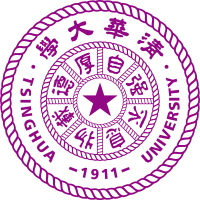

![]()
home
::: about
::: news
::: links
::: giving
::: contact
![]()
events
::: calendar
::: lunchtime
::: annual
lecture series
::: conferences
![]()
people
::: visiting fellows
::: postdoc fellows
::: senior fellows
::: resident fellows
::: associates
![]()
joining
::: visiting fellowships
::: postdoc fellowships
::: senior fellowships
::: resident fellowships
::: associateships
![]()
being here
::: visiting
::: the last donut
::: photo album
|
2018
J. Dmitri Gallow, Causality
Syllabus
Lecture 1: Causation as Probability Raising
There appears to be a close connection between causation and probability. After all, statistical information often allows us to reach causal conclusions. A first-pass thought is that causes raise the probability of their effects. This first-pass idea runs into trouble, since not all probability-raisers are causes, and not all causes are probability-raisers. In this lecture, we will learn about this trouble, as well as some more sophisticated theories of the relationship between causation and probability.
Reading:
1) Section 2 of Suppes (1970). A Probabilistic Theory of Causality. North-Holland Publishing Company, Amsterdam.
Optional Reading:
1) Chapter 1 of Eells (1991). Probabilistic Causality. Cambridge University Press, Cambridge.
2) Sections 2.1 and 2.2 of Eells’s Probabilistic Causality.
Lecture 2: Causation as Difference Making
Just as there appears to be a close connection between causation and probability, there appears to be a close connection between causation and difference-making. Causes usually make a difference to their effects. If Y wiggles after we wiggle X, this is usually taken as good evidence that X and Y are causally related. A first pass thought is that causes make a difference to their effects in this sense: had the cause not occurred, the effect would not have occurred, either. This first-pass idea runs into trouble, since sometimes, causes don’t make a difference to their effects in this sense. In this lecture, we will learn about these troubles, as well as some more sophisticated theories of the relationship between causation and difference-making.
Reading:
1) Lewis (1973). Causation. Journal of Philosophy, vol. 70 (17): pp. 556—567.
2) Lewis (1986). Postscripts to ‘Causation’, in Philosophical Papers, Vol II. Oxford University Press, Oxford.
Optional Reading:
1) Stalnaker (1968). A Theory of Conditionals, in Studies in Logical Theory. Rescher (ed). Oxford University Press, Oxford. Chapter 4.
2) Schaffer (2000). Trumping Preemption. Journal of Philosophy, vol. 97 (4): pp. 165—181.
3) Lewis (2004). Causation as Influence, in Causation and Counterfactuals. Collins, Hall, and Paul (eds). MIT Press, Cambridge, MA. pp. 75—106.
Lecture 3: Causation as Potential Difference Making
The theories discussed in lecture 2 encountered serious difficulties. Some believe that these difficulties can be overcome if we widen our focus to consider not just a cause and a putative effect, but also the broader network of causal determination in which the cause and effect are situated. ‘Structural Equations Models’ provide a formal framework for representing these networks of causal determination. And several philosophers have advanced theories of causation formulated in terms of these models. According to these philosophers, causation is not difference-making per se, but rather potential difference-making—that is, difference making in some non-actual state of affairs.
Reading:
1) Hitchcock (2001). The Intransitivity of Causation Revealed in Equations and Graphs. Journal of Philosophy, vol. 98 (6): pp. 273—299.
Optional Reading:
1) Halpern & Pearl (2005). Causes and Explanations: A Structural-Model Approach. Part 1: Causes. The British Journal for the Philosophy of Science, vol. 56: pp. 843—887.
Lecture 4: Causation and Agency
There appears to be a close connection between causation and agential deliberation. Causes often offer us handles for controlling the world around us; causes are effective means for us to bring about their effects. In this lecture, we will learn about theories of causation built around this idea, as well as the relationship between causation, probability, and rational decision making.
Reading:
1) Price & Menzies (1993). Causation as a Secondary Quality. The British Journal for the Philosophy of Science. Vol 45: pp. 1001—1021.
Optional Reading:
1) Hitchcock (2016). Conditioning, Intervening, and Decision. Synthese. Vol. 194 (4): pp. 1157—1176.
2) Chapters 2 and 3 of Woodward (2003). Making Things Happen: A Theory of Causal Explanation. Oxford University Press, Oxford.
Lecture 5: Causation and Normality
Surprisingly, there appears to be a connection between our judgments of causation and which factors we take to be normal, default, or inertial. This connection comes out in cases of causation by omission. I promise to water your plant while you’re on vacation, but I don’t. The plant dies. My failure to water the plant caused it to die. Your failure to water the plant didn’t. Nor did the Queen of England’s failure to water the plant cause it to die. What does my failure have that yours and the Queen’s lacks? Some have thought this: your and the Queen’s failures are normal; mine was not. The connection also comes out when we notice that systems which differ causally may nevertheless be represented with the same system of structural equations. The only relevant difference between these systems appears to be which factors are normal, default, or inertial, and which factors are departures from normal, default, or inertial behavior. In this lecture, we will consider arguments that considerations like these show that any adequate theory of causation must be sensitive to considerations of normality.
Reading:
1) McGrath (2005). Causation by Omission: A Dilemma. Philosophical Studies, vol. 123: pp. 125—148.
Optional Reading:
1) Maudlin (2004). Causation, Counterfactuals, and the Third Factor, in Causation and Counterfactuals. Collins, Hall, and Paul (eds). MIT Press, Cambridge, MA. pp. 419—443.
2) Hall (2007). Structural Equations and Causation. Philosophical Studies, vol. 132 (1): pp. 109—136.
3) Hitchcock & Knobe (2009). Cause and Norm. Journal of Philosophy, vol. 116 (11): pp. 587—612.

